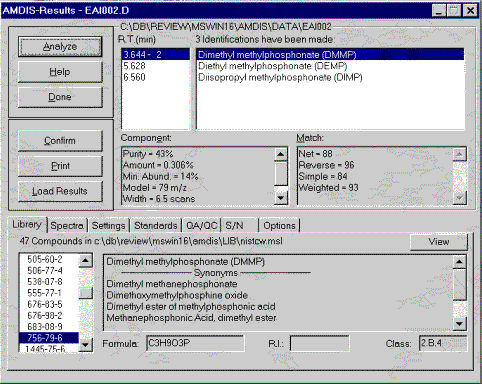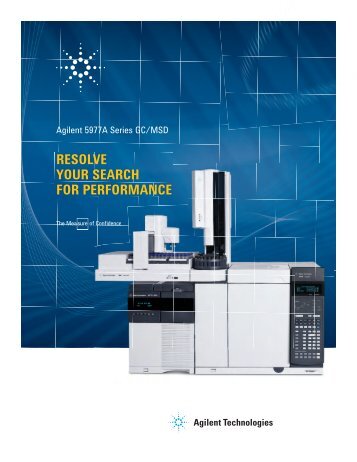Gc Msd Chemstation Software Download

• Support for both MassHunter Data Analysis and MSD ChemStation Data Analysis. •: Unified GC/MS acquisition for your Agilent 5977 and 5975 Series GC/MSD, 7000 Series GC/Triple Quad, 7200 GC/Q-TOF, and Agilent 7980 series GC. Supports the MassHunter workflow for all instruments and the classic MSD ChemStation workflows for your GCMSD and GC only operation. •: Supports your existing MSD Productivity ChemStation SOP’s, methods, macros, and reports. Coupled with GC/MS Acquisition, provides the latest iteration of MSD ChemStation, with all the capabilities and features you expect from your Agilent GC/MSD, including DRS. •: Advanced quantitation through features such as batch-at a glance, compounds-at-a-glance, and dynamically linked result review and reprocessing. Using automated quality checking and outlier flagging, plus parameter-less integrators with built-in peak validation capability let you focus exclusively on problem peaks and minimize manual reintegration.
•: Advanced data mining and processing tools, such as integrated chromatographic deconvolution, let you rapidly and accurately find all detectable compounds in your samples and easily confirm targets or identify unknowns through spectral searching with the NIST MS Spectral Library or Agilent’s Retention Time Locked (RTL) Databases for specific applications. • MassHunter Compliance: Audit trail and Data security Tools to support the operation under regulated environments such as 21CFR11. Use OpenLAB ECM for archival of Quantitative Analysis batch data and results with integrated export capabilities.
• such as Quantitative Method translator and Data Translators for MSD ChemStation, MS Workstation and AIA data files provide compatibility with existing Agilent GC/MS systems. • Available as English, Japanese, and Simplified Chinese language versions based on the installed Operating System language.
Literature Brochure.
Free agilent chemstation download download software at UpdateStar. » agilent gc-msd chemstation download. Agilent chemstation download. Jul 23, 2015 how to install Agilent Chemstation Software B 04 03 1 - Duration. MSD Productivity. 6890 GC GC/MS Chemstation Software Agilent DA Version.
Our technical service department receives quite a few MSD ChemStation software functionality related requests which are frequently forwarded to me. I’ve decided to start a blog series to address these requests. Feel free to leave requests in the comments if there’s something you need help with. I will primarily be working in the most current version of MSD ChemStation that I have: G1701EA.02.02, though I can offer help with AA.03, BA.00, and various DA and EA versions of the software. Be forewarned; my experience is limited to Enviroquant and Enhanced ChemStation.

The first request I’m going to address is how to add or change internal standard and surrogate compounds in a calibration using Enviroquant and Enhanced Chemstation, and how to configure the software to automatically calculate concentrations and surrogate percent recoveries using the internal standards. I will be using the 524.3 list as an example. This technique is particularly useful if your lab is expanding the tests offered from hazardous waste (series 8000 methods) to waste water (series 600). Your compound lists and analytical columns will see little to no change, but your internal standard and surrogate compounds may be different. The technique is also useful if you are converting an external standard calibration to an internal standard calibration (for example, 8081) to avoid the closing calibration verification requirements.
Table 4 on page 35 of EPA Method 524.3 lists the target compounds, the internal standard compound each is associated with, and a recommended quant ion. The recommended column for this analysis is the 30m x 0.25mm x 1.4µm Rtx-VMS.
If you use these conditions, you should be able to match your compound list to the published elution order and retention times. The easiest way to reorganize the compound list is in Enhanced ChemStation under the “Calibrate” menu. If your compound list does not contain the correct internal standards, or they are not configured as internal standards, you will need to use the Edit Compounds option found under the Calibrate menu in Enhanced ChemStation (or Initial Calibration menu in Enviroquant) to add them. If you don’t have any configured internal standards, your quant database should look similar to the image above. If you have the wrong compounds configured as internal standards, delete them by right clicking on the compound and choosing the delete option.
In order to add the first internal standard compound, right click “Compound Database” at the top of the list, and chose the option “Insert ISTD Compound Below current Group” and then fill out the relevant information for the compound. Make sure you change the quant signal to “Target Ion” and use the recommended ion 114 (taken from EPA method 524.3 Table 4). Do the same for the other two internal standards. You’ll notice, however, that the internal standards are at the bottom of the compound list. In Enhanced ChemStation, choose “Reorder Compounds” under the “Calibrate” menu, and a popup will open that allows you to move compounds by assigning them a new order number. You want to make sure you list all the compounds associated with internal standard (IS) 1 before the compounds associated with IS 2, which should be listed before the compounds associated with IS 3. You will want to move the internal standard compounds above the compounds they are associated with.
In the case of 524. Come Scaricare Il Software Entratel Login. 3 on the Rtx-VMS, you will move 1,4-difluorobenzene above dichlorodifluoromethane, chlorobenzene-d5 between cis-1,3-dichloropropene and toluene, and 1,4-dichlorobenzene-d4 between isopropylbenzene and 4-bromofluorobenzene. I have not been able to find this functionality in Enviroquant.
At this point, if you were to calculate your results, you would see the Internal standards grouped above the target compounds, but we want to calculate the surrogate percent recoveries too. To calculate the surrogate recoveries, the surrogates need to classified as such in the software.
This is done by entering “S” in the edit compound type field under edit compounds on the “Identification” tab. The expected spike amount for the surrogate and the control ranges are entered on the “Reporting” tab in Edit Compounds. Now, when you calculate results, you should see the surrogate compounds grouped under the internal standard compounds with a calculation of the percent recovered. I hope this first guide was helpful; don’t hesitate to add questions or suggestions in the comments below. Unless someone suggests something better, the next walk-through will be on running versions of MSD ChemStation that are incompatible with Windows 7 from the Virtual XP machine. This entry was posted on Thursday, January 31st, 2013 at 11:49 pm and is filed under,,,. You can follow any responses to this entry through the feed.
You can, or from your own site. 23 Responses to “Welcome to MSD ChemStation 101”. Good point about the API issues, Jason. I believe the.NET differences in the versions of E.02 have to do with added compatibility for Windows Vista (E.02.01) and Windows 7 (E.02.02).
Fortunately, you can run E.02.00 in the virtual Windows XP machine included with Windows 7. This is an easy way to sidestep OS compatibility issues as you upgrade your computers. This may be the subject for my next blog While we are on the subject of Windows/ChemStation API issues, I want to point out that MSD ChemStation had problems with the transition from Microsoft’s.COM to.NET architecture. There are known issues with D.02 and the E versions prior to E.02. If anyone is running one these versions of the software and having productivity issues, they should contact Agilent.
The HPIB 6890/5973 GC-MS combo requires D.03, while the LAN instruments should be upgraded to E.02. I actually have a question on Chemstation Version D.02.00.
I am loading it onto my computer and able to get the instrument to run but while it is connected to the network I am unable to connect to my local area network and the internet. Do you know if this is a glitch with the software or is there a way to set up the instrument so I am able to also access my local network.
I have installed 2 network cards also. Do you have any suggestions. I had out computer guy look at it and so far cant figure it out. Hi Chris, I am using windows 7 with chemstation VERSION E.02.02. When I try to print custom report it crashes with following error.it was working fine with windows xp and version E.00.00 Unfortunately, I have to update my computer with new version.
Custom report doesn’t work with E.02.02 do you have any idea how to fix this error?. Problem signature: Problem Event Name: APPCRASH Application Name: msda.exe Application Version: 5.0.0.0 Application Timestamp: 4dd245c9 Fault Module Name: HiaCpCom.dll Fault Module Version: 5.0.0.0 Fault Module Timestamp: 4dd23f9f Exception Code: c0000005 Exception Offset: 0000390a OS Version: 6.1.7600.2.0.0.256.48 Locale ID: 1033 Additional Information 1: 0a9e Additional Information 2: 0a9e372d3b4ad19135b953a78882e789 Additional Information 3: 0a9e Additional Information 4: 0a9e372d3b4ad19135b953a78882e789 •. Hi I am really excited to find this blog with tips and tricks. Even though my question is not quite fit the scope. However, I really have no other place to find the answer. Hope this will not bother you too much.
I am using the MSD chemstation as well. It is G1701EA. I am currently running some SCFA samples on GC. And I am wondering if you guys can direct me to find the button to generate a batch report or a sequence summary report. I am able to get the batch do auto integrate and quantitate. However, I could not find a place to generate a single report which have all the compound identified for all 177 samples that I ran. Scarface Ps2 Ntsc Iso Torrent on this page. Could you please help me with this?